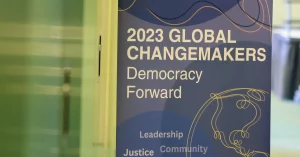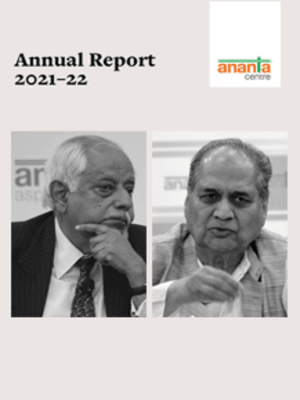Making growth forecasts post-Covid becomes more difficult
How serious will be the impact of the Covid-19 outbreak on India’s economic growth? The range of estimates on India’s growth of gross domestic product (GDP) in 2020-21 is quite wide and, therefore, puzzling. It is difficult to state with certainty at this point in time which forecast is going to be closer to the final number on growth. But a quick review of the different estimates put out by different agencies will give an indication of the nature of the devastating impact of the Coronavirus on the world economy in general and the Indian economy, in particular. The first quarter of 2020-21 will be virtually wiped out, with a huge contraction. Things might look up a bit in the second quarter, but the recovery cannot be significant. Perhaps, from the third quarter onwards, economic activity would pick up speed. But the unprecedented nature of the impact arising out of the national lockdown for over 40 days (and perhaps for a longer period of time in major centres of economic activity like Mumbai, Pune and the National Capital Region of Delhi) has created more uncertainty and made the task of making any credible forecasts even more difficult.
IMF paints a growth scenario, which has few takers
The International Monetary Fund (IMF) has come out with a growth estimate of 1.9 per cent for India in 2020-21- a figure that has certainly come as a big relief for the government. But remember that the IMF’s track record in estimating the Indian economy’s growth has not been too good and its estimates in the past have often been wide of the mark. The IMF estimate for India is crucially dependent on the pandemic coming under control in the second half of 2020 leading to a quick restoration of consumer and investor confidence. India, according to this estimate will be the fastest growing major economy, scaling past the projected growth rate of 1.2 per cent for China. Indeed, India and China are being reckoned by the IMF as the only two major economies in the world to record growth amidst a 3 per cent decline in the global economy’s output. But a decline in the growth rate from 5 per cent in 2019-20 to just 1.9 per cent will in itself be a big shock to the Indian economy.
The IMF projection has come in quite useful for the Reserve Bank of India, which stated on April 17 that India would be “among the handful of countries that is projected to cling on tenuously to positive growth (at 1.9 per cent).” This was amidst an overall gloomy scenario, where the global economy was expected to plunge into the worst recession since the Great Depression, far worse than the Global Financial Crisis, and the cumulative loss to global GDP over 2020 and 2021 was estimated at over $9 trillion. Global trade is expected to contract by 13 to 32 per cent in 2020. While global financial markets remain volatile, emerging economies are under pressure because of capital outflows and volatile exchange rates. Complicating the world outlook further is the crude oil prices, which have seen huge declines. But the IMF sees a V-shaped recovery in 2021, when global growth is projected to jump by 9 percentage points and India too would benefit with its economy growing at 7.4 per cent in 2021-22. Many economists have expressed serious doubts about the IMF forecast, led by India’s former chief economic advisor, Shankar N. Acharya, who described it as ludicrous and irresponsible, as he was of the view that the actual growth could be in the negative zone.
RBI sees “slivers of brightness amidst encircling gloom”
The RBI assessment of April 17 did notice in the Indian economy “a few slivers of brightness amidst the encircling gloom”. It drew satisfaction from the resilience of agriculture and allied activities, “on the back of all-time highs in the production of food grains and horticulture, with huge buffer stocks of rice and wheat far in excess of the buffer norms.” It also drew comfort from the fact that by April 10, pre-monsoon kharif sowing had progressed smoothly, with the acreage of paddy going up by 37 per cent over the previous season. According to the central bank’s information, sowing activity has been going on despite the lockdown in states like West Bengal, Telangana, Odisha, Assam, Karnataka and Chhattisgarh. The principal pre-monsoon kharif crop is paddy and all these states have a significant share in such paddy output. The forecast of a normal south-west monsoon for 2020 has also given some hope to the RBI that farm output in the country during the kharif season will largely remain unaffected, helping revive rural demand.
However, there is no gainsaying that the “encircling gloom” that the RBI referred to in its assessment will have serious implications for the economy. The central bank noted that the rise in electricity generation, witnessed from January 2020 and read as a sign of demand revival, had fallen by 25-30 per cent after the announcement of the lockdown on March 25. Automobile production and sales, too, declined sharply. The freight traffic handled by ports has dropped. The purchasing managers’ index for the manufacturing sector reported a print in April that was the lowest in the last four months, and the index for the services sector had contracted in March, thanks to a slowdown in exports, new domestic orders and employment.
Bad tidings on growth estimates from others as well
How Covid-19 had an impact on India’s growth prospects in 2020-21 could be sensed from the three different estimates made by a leading rating agency, Fitch Ratings. Sometime around the middle of March, Fitch Ratings estimated that India’s GDP in 2020-21 could grow at 5.1 per cent, a little higher than the 5 per cent growth estimated for 2019-20. The government enforced a national lockdown on March 25. Quickly assessing the impact of the lockdown on growth, Fitch Ratings scaled down its growth forecast for India in 2020-21 to just 2 per cent. About 20 days later, on April 23, Fitch Rating’s assessment of India’s economic performance got worse and it forecast that the growth in the current year would be no higher than 0.8 per cent. Its grim projection is based on its assessment that a global recession is in the offing and the Indian economy would suffer a contraction in the first two quarters of the current financial year. In sync with the IMF projections, Fitch Ratings also projected a sharp recovery of the Indian economy to 6.7 per cent growth in 2021-22. Similar grim projections were made by other agencies like Moody’s Investors Service and Nomura. Initially in March, Moody’s had forecast that the Indian economy would grow by 2.5 per cent in the current year, but a month and a half later it revised the forecast downwards to just 0.2 per cent. Like many others, it has projected that India in 2021-22 may stage a sharp recovery with a growth rate of 6.2 per cent. Nomura has projected the Indian economy to decline by 0.5 per cent in 2020-21.
No respite from gloomy foreign trade numbers
India’s foreign trade numbers for the full year of 2019-20 were released early this month. India’s combined exports of goods and services during the April-March 2029-20 period were estimated at $528.45 billion, representing a fall of 1.36 per cent. Imports too fell – at $598.61 billion – a decline of over 6 per cent. That the overall trade deficit declined by almost a third to $70 billion was some comfort, but a reduced trade deficit also showed falling industrial demand – a pointer to a decline in the pace of economic activity. In addition, there were three reasons for concern.
One, India’s services exports have traditionally provided support to its overall trade account, by not allowing the imbalance to get worse. Services exports would keep growing at a healthy rate, which would be good enough to prevent further exacerbation or widening of the merchandise trade deficit. But 2019-20 saw services exports also record an increase of only 4.13 per cent, which was not enough to bolster the fall in merchandise exports. If this trend continues, India’s current account imbalances may get worse, raising concerns over the balance of payments situation in years when capital flows may see a deceleration.
Two, softening international crude oil prices should have helped the country’s balance of trade, as India depends on imports to meet as much as 83 per cent of its total crude oil requirement. There was indeed a fall in imports of petroleum products by about 8 per cent to $129 billion in 2019-20. But this benefit was neutralised to a great degree because petroleum products constitute the second biggest item of exports, after engineering goods. And petroleum product exports at $43 billion also saw a decline of about 8 per cent.
Three, the performance of exports and imports in March 2020 indicated the magnitude of the challenges India’s economy would encounter in a post-Covid world. March did not experience the full impact of the disruption caused by the disease and the lockdown. And yet, India’s merchandise exports in March 2020 fell by over 34 per cent to $21.41 billion. Imports of goods too fell, but by a bigger margin of 29 per cent in March to $31 billion. The trend on services trade was not dissimilar – services exports in March fell by 18 per cent to $18 billion and service imports too fell by 17 per cent to $11 billion. Trade data for April is not yet available, but there is little doubt that more devastating news awaits this sector not just for April, but for a couple of more months after this. The projections are that global trade will shrink by 13-32 per cent in 2020.
Global crude oil prices crash, but brings little benefit for India
Thanks to the adverse impact of Covid-19 on the pace of economic activity across the world, the demand for crude oil has slumped. This has also pulled down prices of crude oil. Even before the outbreak of Covid-19, crude oil prices had begun to move south. In the second week of March, prices of Brent crude oil (largely used by Indian refineries) fell to $36 a barrel – the biggest crash in three decades, from around $67 a barrel at the start of 2020. Between 2010 and 2014, Brent crude oil prices hovered around the $100 a barrel mark and had even touched as high a level as $120 a barrel in 2012. High crude oil prices mean bad news for India as costs go up. But when crude oil prices began falling after 2014, the Indian economy gained and the Indian government gained even more as it could impose higher duties, without raising retail selling prices, and mopping up the much-needed extra tax revenues to bridge the fiscal deficit.
Members of the Organisation of the Petroleum Exporting Countries (OPEC), which accounts for 80 per cent of the world’s oil exports, held meetings with Russia (the third largest producer of oil in the world) in early March to decide on a voluntary cut in oil production to prevent a further fall in prices. After sorting out their initial differences, the OPEC countries along with Russia finally decided to slash about 10 percent of the global output from May. But as the impact of the Covid-19 outbreak is being felt across the world, even this level of output cut is failing to prevent a further slide in oil prices. In April, West Texas Intermediate price of crude oil (the benchmark price for crude oil produced in North America) crashed. The price for May Futures reached a price of -38 dollar a barrel on the expiry day of that contract. Prices recovered after that as June Futures rose to $12 a barrel. But the overall impact on international crude oil prices was adverse. Brent crude oil price also slumped to around $20 a barrel, though it has recovered marginally since then. There are fears of over production of crude oil, which will be more than what the available storage capacity can hold. Hence, the uncertainty in the oil market and the southward journey of oil prices.
India, which depends on crude oil to the extent of more than three-fourths of its total demand, would have benefitted from it, but for the lockdown having crushed demand in the wake of Covid-19. Its demand for crude oil has declined (the fall in sales of petroleum products in April was over 60 per cent), the refineries’ financials are adversely affected and the flow of the government’s tax revenues from the oil sector have slumped. This will probably be the rare occasion when in spite of a fall in crude oil prices, there would hardly be any benefit for the Indian economy and the Indian government. It is time perhaps for the Indian government to use the opportunity of low oil prices to increase its oil reserves and bolster its revenues through carefully calibrated increases in the excise duty.
FDI policy for China tweaked, raising difficult start-up questions
In the wake of the Covid-19 outbreak, the Indian government took an important decision that had an impact on the country’s foreign direct investment (FDI). In a bid to curb “opportunistic takeovers/acquisition of Indian companies due to the current Covid-19 pandemic,” the government issued an order that made specific and prior approvals mandatory for all FDI from countries with which India had a land border. These restrictions would be enforced even for investments from other countries, if their beneficiary ownership resides in any one of those countries with which India has a land border. This order would impact investments from countries such as Pakistan, Afghanistan, China, Bhutan, Nepal, Myanmar and Bangladesh. Already, similar restrictions were in force for FDI from Pakistan and Bangladesh. Since investments from Afghanistan, Myanmar, Bhutan and Nepal were negligible, it was clear that the real target of the decision was China. Similar restrictions on Chinese FDI have been put in place by many other countries like Australia, Germany, Italy and Spain. The strategic concerns that drove the decision is understandable. The move has been challenged by the Chinese authorities as not being compliant with investment norms under the World Trading Organisation (WTO), but India has rejected such charges. While this contentious issue will not be resolved soon, the more pressing question will have to be faced by several Indian start-up companies, which have huge investments from Chinese funds. An important policy imperative for India would be to ensure that this order does not dry up future fund flows for the Indian start-ups. Another niggling issue could arise from Chinese investments in Indian companies through the secondary market – through India’s stock exchanges. At present, no such restrictions are in place. Nor can such restrictions be enforced on investments made through stock exchanges, as long as those remain within the norms stipulated by the market regulator. A recent example is the People’s Bank of China raising its equity stake in HDFC from 0.8 per cent to 1.01 per cent through its purchase from the stock exchange.
RBI moves in swiftly; concerns over bypassing MPC framework
In a series of measures, the Reserve Bank of India (RBI) has stepped in to alleviate the adverse impact of Covid-19 on the financial sector. Its initial efforts were to provide adequate liquidity through its reverse repo operations, followed by targeted long-term repo operations (TLTRO) of about Rs 50,000 crore specifically for the non-banking finance companies and micro-finance institutions. A special refinance facility for an amount of Rs 50,000 crore was announced for the National Bank for Agriculture and Rural Development, the Small Industries Development Bank of India and the National Housing Bank. The objective was to ensure funds availability for the small and medium units operating in different sectors of the economy. In a bid to help the states overcome the problem arising out of their temporary mismatches in their revenues and expenditure, the RBI also increased the Ways and Means Advances (WMA) limit by 60 per cent. The WMA limit for the Centre has also been enhanced up to Rs 2 lakh crore. In a major relaxation in the norms for recognising non-performing assets of banks, the RBI has decided that for accounts that enjoyed a moratorium till May 31, the NPA norms would kick in only from June 1 and not during the moratorium period.
The most significant decision was to reduce the reverse repo rate (at which banks can park their excess liquidity with the RBI) by another 25 basis points to 3.75 per cent. Already, at the last monetary policy review in March, the reverse repo rate had been brought down by 90 basis points to 4 per cent. This reduction was sharper than that in the repo rate (at which banks borrow from the RBI), which was brought down by 75 basis points to 4.4 per cent. With no reverse repo auctions of late, the latest reduction in the reverse repo rate has effectively brought down the operating rate of interest in the financial sector. The RBI has also hinted at a further softening of interest rates with the retail inflation expected to decline further in the coming months. These are unusual times. The RBI has been proactive in making such interventions. However, there are questions on the propriety of some of these decisions being taken outside the framework of the Monetary Policy Committee, a system that had been put in place in 2016.
(The views expressed are personal)

























